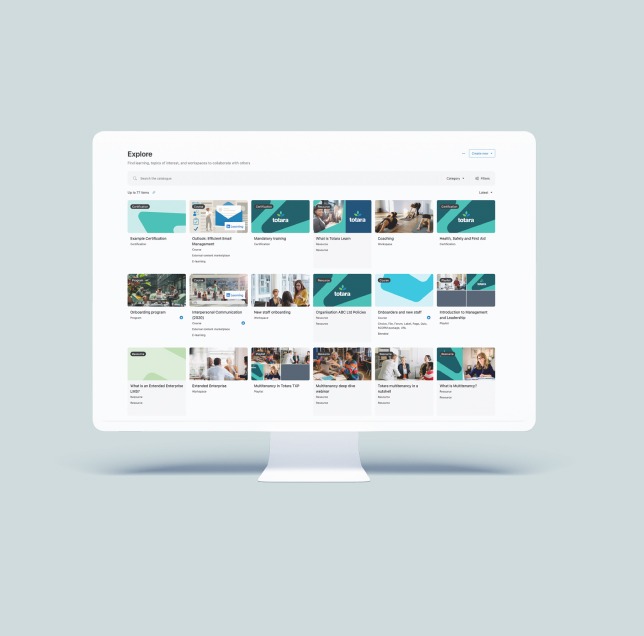Last week, we revealed the first two ways for you to ensure LMS success – namely ensuring your LMS molds to your organisation and customising the look and feel of your LMS.
This week, we’re sharing our next two tips for getting the most out of your LMS and achieving real ROI – and they’re big ones! First, we’ll be exploring why opting for an adaptable LMS that integrates with your wider technology infrastructure is so vital to its success. Next, we’ll reveal why it’s time to break free from your LMS vendor’s roadmap and take back control of your system.
Make sure your LMS integrates with your technology ecosystem
Workplace learning doesn’t stand in isolation – far from it, in fact. Learning is connected to virtually every other process and department in your organisation, from sales figures to bonuses to satisfaction ratings to performance levels to customer service and much, much more. Learning teams know this only too well, and the LMS usually sits at the very heart of these intra-organisational processes, acting as a hub through which all learning data flows.
To reduce human error and duplication of effort and enrich your organisation’s people data, your LMS should integrate with your learning experience platform (LXP to deliver effective employee engagement strategies), your performance management system, your HR system, your CRM… the list goes on. So, if you’re looking for an LMS that integrates with the rest of your system, these are the questions you should be asking your LMS vendor.
- What sort of APIs and import/export options are available within the LMS?
It’s important to dig into the technicalities of your LMS. If necessary, it may be worth inviting your IT team into these discussions to ensure that the technical setup will work within your IT infrastructure. Your vendor should know exactly which APIs you should use to connect your LMS to your other systems, so you can ensure that everyone is on the same page with regard to any technical considerations. - Can we create a custom integration between the LMS and our other systems?
Some learning management systems may come with inbuilt integrations with other systems straight out of the box. However, ideally, your system, whether it’s a cloud-based LMS platform or not, will integrate with all relevant systems in your organisation’s technology ecosystem. It’s important to find out if it’s possible to create a custom integration to link your LMS to your other systems, such as HR, payroll and sales platforms. - Does the LMS support single sign-on or shared authentication?
Your LMS will likely be one of many systems in your organisation. Instead of adding yet another set of login credentials to your employees’ lists, it usually makes sense to find an LMS that supports single sign-on or shared authentication. Find out if they can log in with their existing credentials, their work email address or even their Google account to reduce the barriers to learning and increase LMS usage.

Don’t get locked into your vendor’s roadmap
You’ve had an idea. Perhaps it’s an innovative gamification plan, or a way to improve your
recommendations engine, or you’ve had a lightning-bolt moment that you’re confident will
completely transform the way people learn in your organisation. Until…
… your LMS says no. The functionality doesn’t yet exist. No problem, you may think – I’ll just ask my vendor when it will be possible. The answer isn’t what you’re hoping for. The functionality you want isn’t on their roadmap. And, worse, you can’t even build it yourself. You’re completely tied to your vendor’s roadmap. What they say, goes. You don’t have a say. Your plans are irrelevant.
Unfortunately, too many LMS vendors don’t have a sustainable innovation roadmap, which in turn hinders your progress. With that in mind, how can you avoid getting locked into your vendor’s roadmap?
- What is the process for developing custom functionality?
When you need custom functionality, how will this process work? Find out how the functionality you need will be designed, built and administered, including how the revision process will work. Ideally, this should be a collaborative process, where your LMS partner understands what you need, why you need it and how it will fit into the wider system. - How does your work impact our ability to upgrade to the new version of the LMS?
It’s vital to find out how your LMS partner performs customisation work. For instance, do they tend to make changes directly to the core code, or do they use plugins? If they edit the core code, it may be more challenging to upgrade to the latest version of the LMS, whereas using modular plugins and extensions means you can upgrade to the new version without issues, and the plugins will continue to function correctly once the upgrade is complete.
We hope that these questions will help you think about your own LMS and whether or not you have the freedom to do what you need to do with your system. Check back again next week for the final part of this mini-series where we’ll be looking at how to ensure your LMS grows with you and why it’s crucial that your LMS adapts to rapid change.






